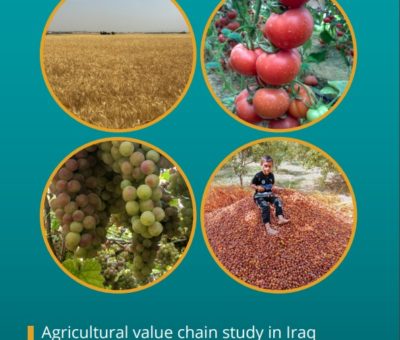EXECUTIVE SUMMARY The Iraqi agriculture sector employs roughly 20 percent of the country’s workforce and is the second largest contributor to the gross domestic product (GDP) after the oil sector, accounting for 5 percent of the GDP. Thus, agriculture development is critical to allow Iraq to achieve their vision of a more diversified economy, in addition to generating employ
Read MoreThe climate of Iraq is of the subtropical semi-dry type; however, the country was rich in water resources until a few decades ago. The climate change, the construction of many dams on the Tigris and Euphrates Rivers in the neighboring countries, wasting water, and mismanagement caused water shortages. Now, there is a need to decrease consumption, good management of water resour
Read MoreBy Khalid Al-Ansary Iraq will offer barley for export for the first time after ample rains and price incentives spurred farmers to grow a surplus of the grain. The government plans to start auctioning 700,000 tons of the grain next week and anticipates interest from Gulf Arab states, Jordan and countries in North Africa, agriculture ministry spokesman Hameed Al-Nayef said
Read MoreAhead of our forthcoming second report on Iraq’s water resources, we spoke with Eckart Woertz, Director at the GIGA Institute of Middle East Studies and Professor for contemporary history and politics of the Middle East at the University of Hamburg. In 2014, Dr. Woertz published Oil for Food: The Global Food Crisis and the Middle East. A detailed analysis of the political ec
Read MoreEXECUTIVE SUMMARY The COVID-19 pandemic continues across the world, and in Iraq the number of cases is rising. As of 30 June 2020, the World Health Organization reported 49,109 cases in Iraq, with 1,943 fatalities. Since March, the government has been enforcing movement restrictions and curfews to help slow transmission of the virus. As the livelihoods of many people have be
Read More





